- Back to Home »
- African Well Fund , Hipstamatic , Hipstamatic Travels »
- Tour of Ganvié, Benin, Hipstamatic Style
Posted by : lara
6.08.2013
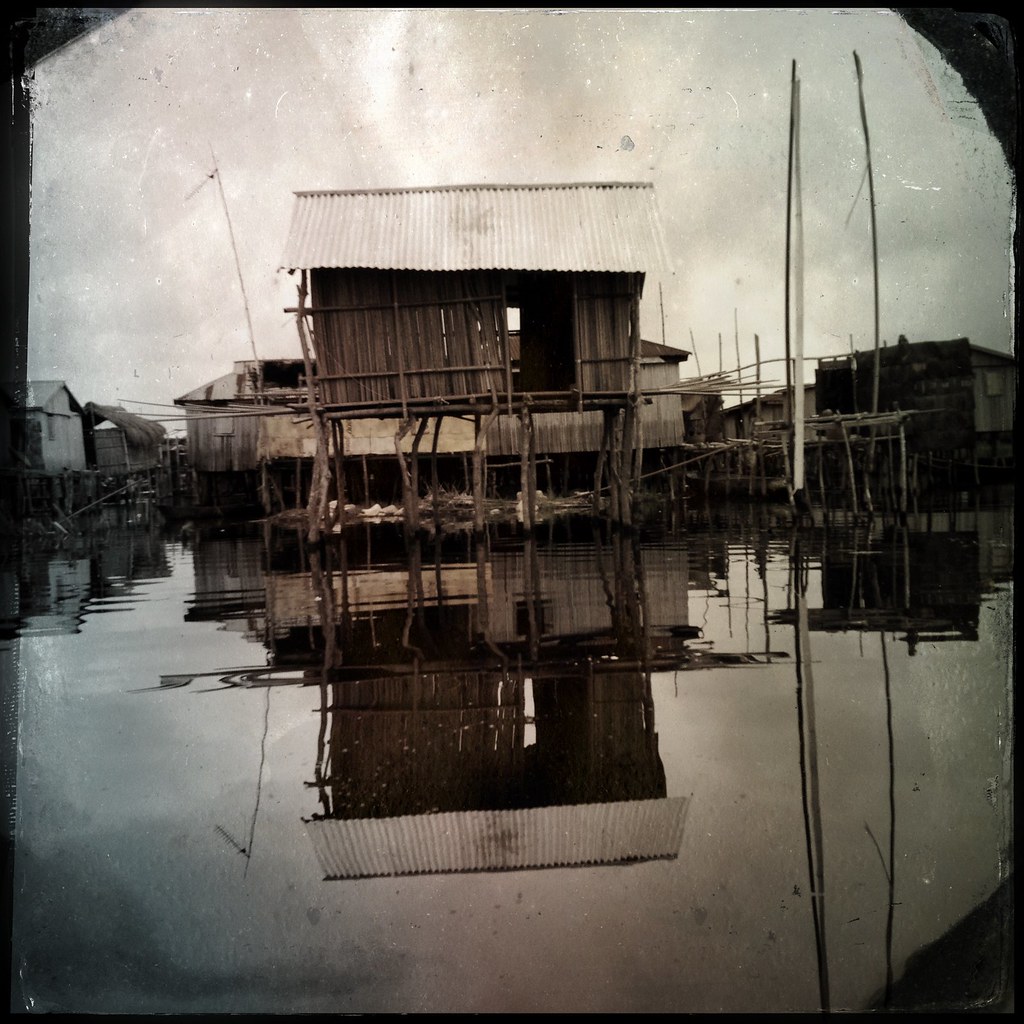
On the first full "free" day we had in Benin we decided to visit Ganvié, a city in Lake Nokoué, made up of houses built on stilts. The city is about 500 years old and was founded by people trying to escape slavery.
The internets tell the story like this:
At the beginning of the seventeenth century the country was called Dahomey and was one of the most powerful states in West Africa. The major ethnic and linguistic group was the Fon and they had made a deal with the Portuguese. Rather than their own people being captured and sold in to slavery they made a contract with the Portuguese to hunt and sell tribes people from smaller ethnic groups.
The Fon warriors were numerous and powerful and there was little other groups of people could do to defend themselves against this onslaught. Then, someone among the Tofinu people came up with an idea. Their name is lost to history but one wise person realized that they could take advantage of the religious practices of their enemy.
The Fon were forbidden by their religion to advance upon and water bound settlement. Any groups of people who lived on water were, by the law of the Fon, safe. Lake Nokoué is simply immense. Ganvié was established as a means to escape being sold in to a lifetime’s slavery and shipped across the world in appalling conditions. No wonder its name means the collectivity of those who found peace at last. The alternative translation is the much more to the point We Survived.
The people of Ganvié are still, centuries later, reluctant to move to solid ground, although the threat of slavery is only a distant memory. They have, over many generations, grown accustomed to living on the water, and have no desire to abandon their unique lifestyle, for anything. This unique African village is completely sustainable, and the only time villagers go ashore is when they want to sell their fish.Approaching Ganvié was a site to behold. Dirt road with a small bustling market of people selling and buying. It was obvious fish was the main product here. Cows and goats were roaming the streets. As like other parts of Benin and Togo we saw, there is no organized disposal system so mounds of trash could be found everywhere. This is also where you would find the cows and goats grazing for their meals.
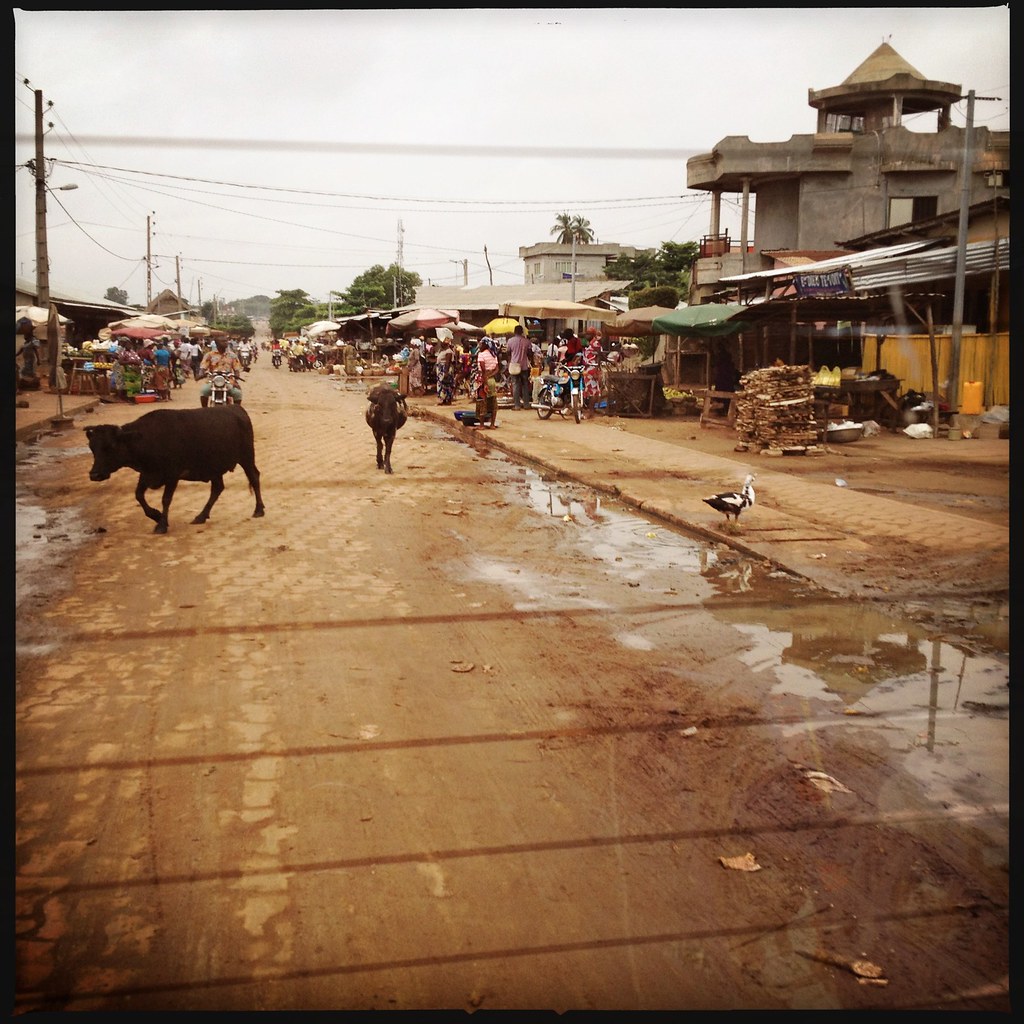
As we had already noticed with the rest of our trip to Togo and Benin, it is the women that do the selling and business. Gender roles still seem extremely defined with men fishing and hunting and women and older children preparing and selling the fruits of the men's labor. I read somewhere on the internets that men sell their fish to their wives who are then responsible for selling it to the public.
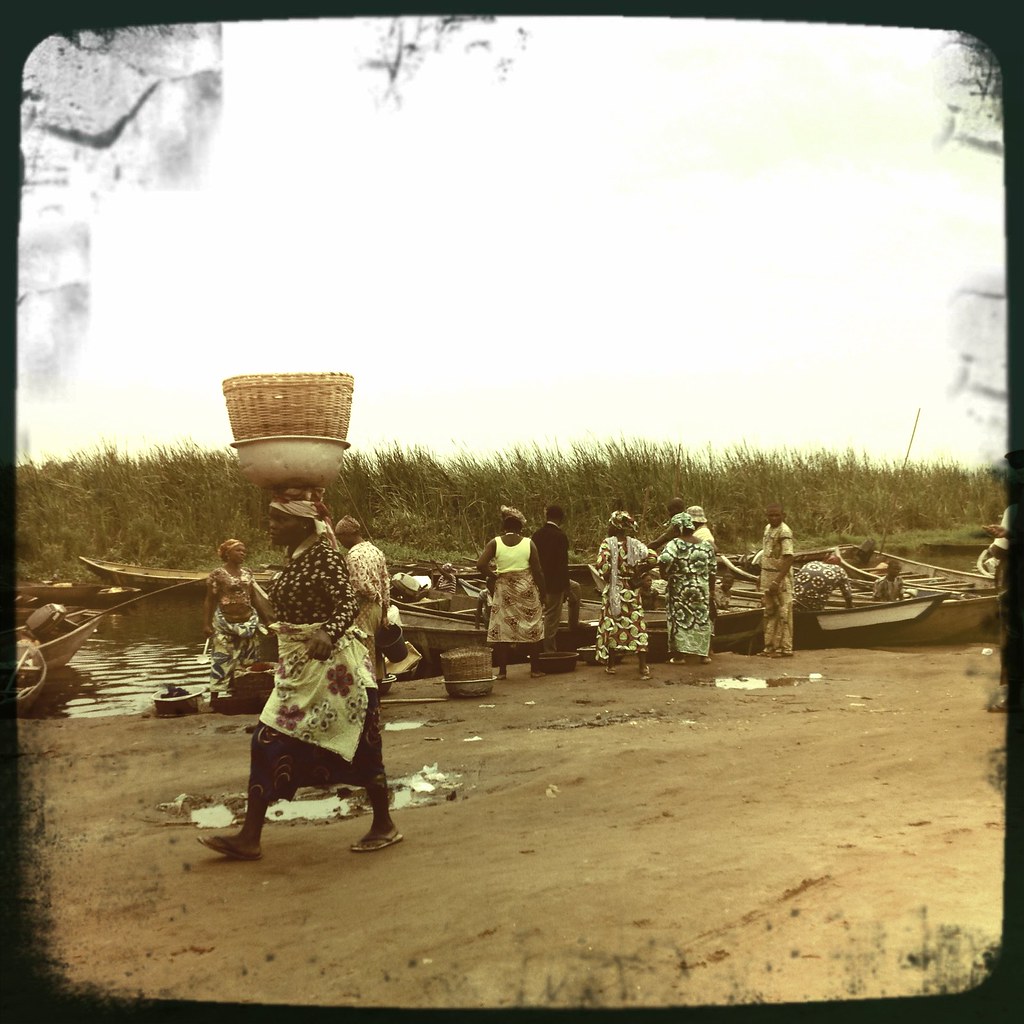
I saw many a young woman scaling fish that was still writhing around or carrying trays of fresh catches on their heads down the street. I have very few photos of actual people from Ganvié as they are extremely resistant to photos being taken. I've heard they believe a photo steals their soul. It wasn't unusual to see people turn their heads or cover their faces with baskets when they saw us assuming we would probably take their photo. In fact, this woman in the photo below got quite unhappy and yelled at me for taking her photo which pretty much put me in my place after that!
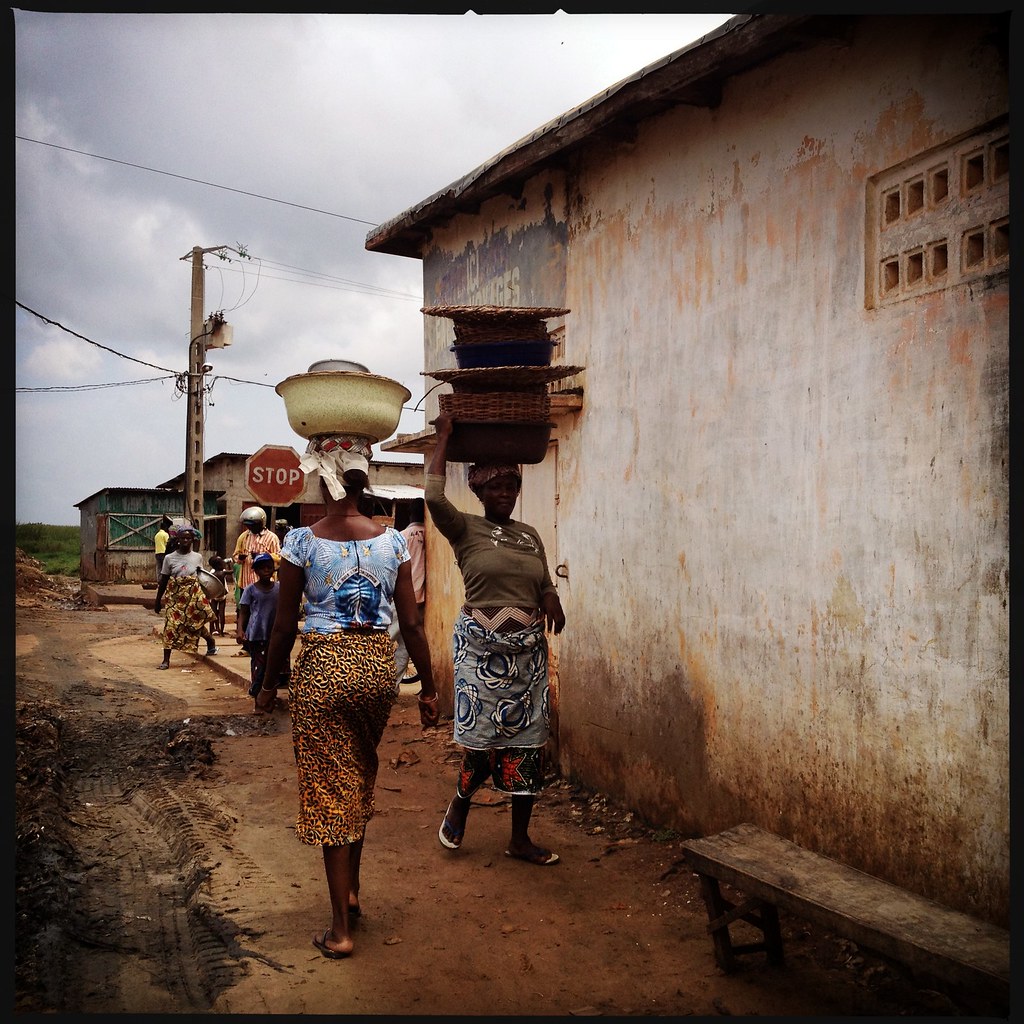
As we made our way to the boat docks to find our canoe we were either greeted by wary stares or extremely friendly children. This young boy was very excited to pose for photos and, of course, after asked for money. Unfortunately, none of us had any change. (As an aside it was an ongoing challenge for us to have change and small bills as most merchants wouldn't take the large bills the ATMs inconveniently gave us).
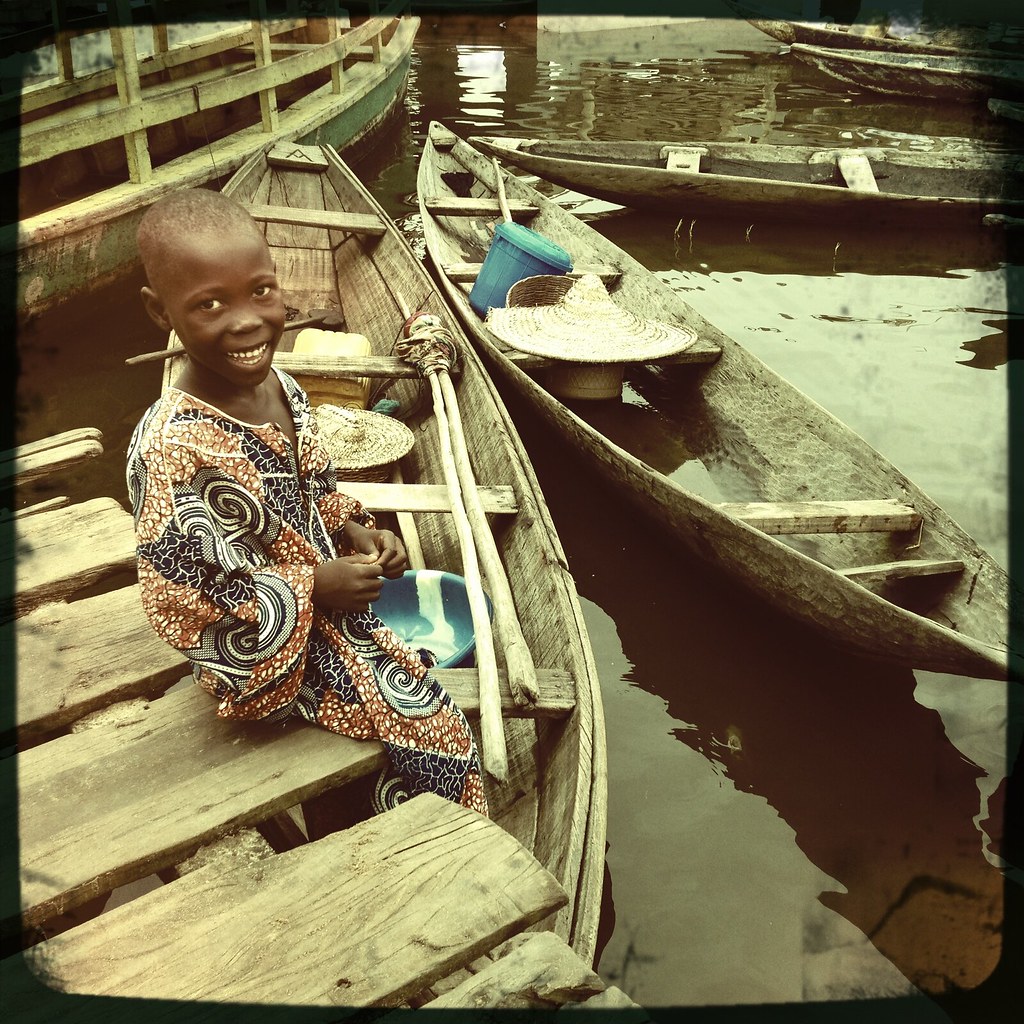
We got into our handmade canoe with trepidation. I can not say I wasn't on the verge of a panic attack as well as perhaps a few others in our group as the canoe had small leaks in it and was very close to the water (not above it like other vessels most of us are used to being on including "American" canoes). There was no motors, just two men with paddles.
As we made our way out to the city in the middle of the lake (it probably took a good hour to an hour and a half to paddle to) we learned of the ways fish are harvested which appear to have not changed much over time.

There were some areas with nets set up on stakes but mostly the fishermen stalked the natural vegetation in the lake, creating boundaries of ownership, where fish were drawn to eat and then caught. Some of these areas had makeshift security huts built to keep watch over, others, I'm still not quite sure how they were kept sectioned off from other farmers. Each of the little bunches of vegetation in the below photo served as fish bait.
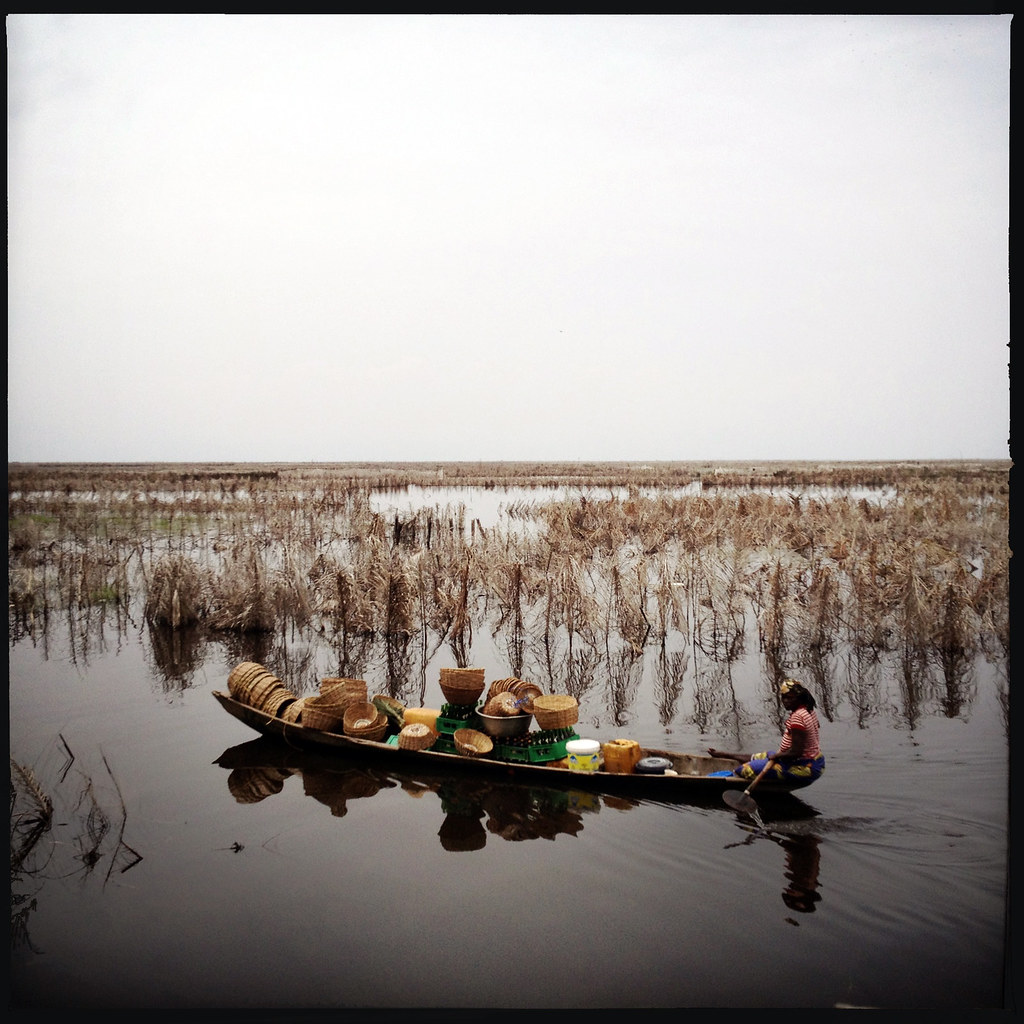
Very rarely did we see women fishing (if at all). Mostly they were paddling between the land and their village. Slow and steady. Singing. We were told they sing when they're tired to make the paddling easier.
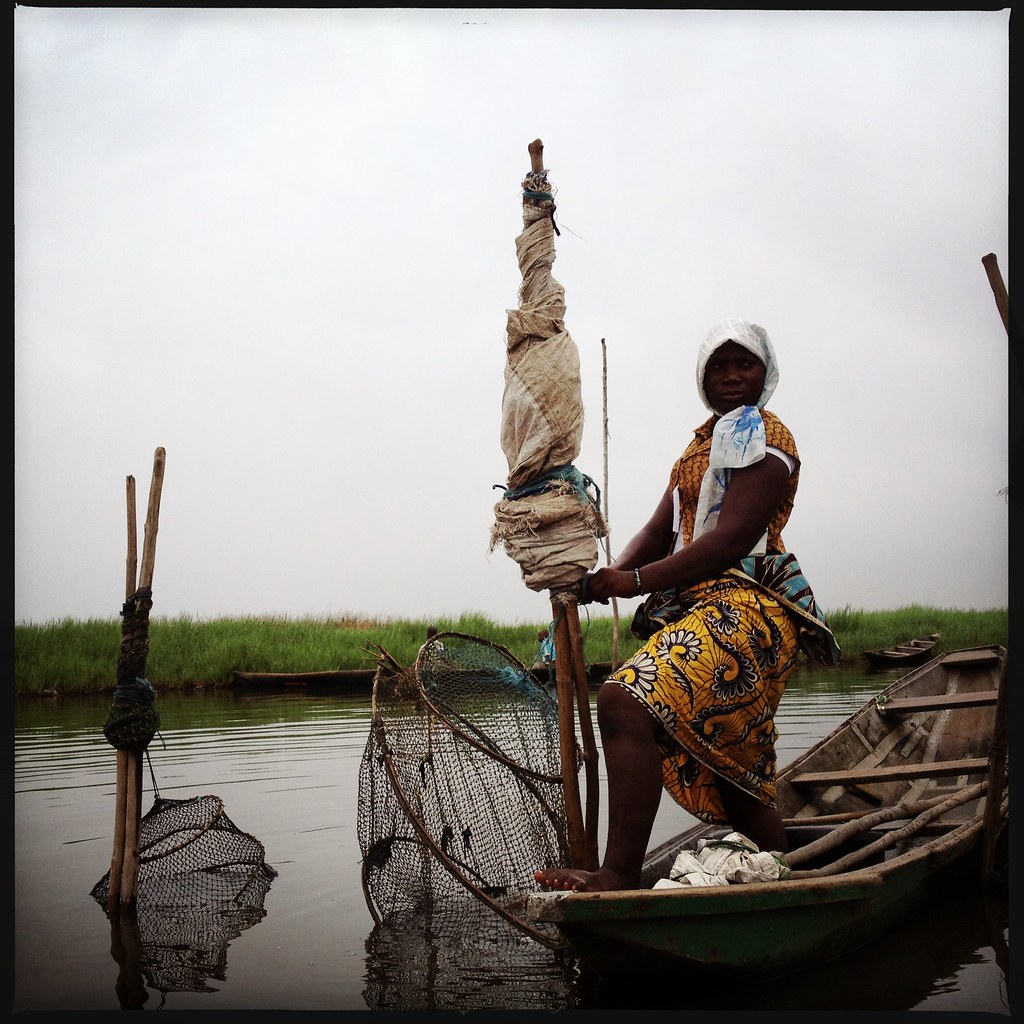
Some rather friendly fishermen we passed:

As we approached Ganvié the houses really were on stilts. You could see right underneath them!
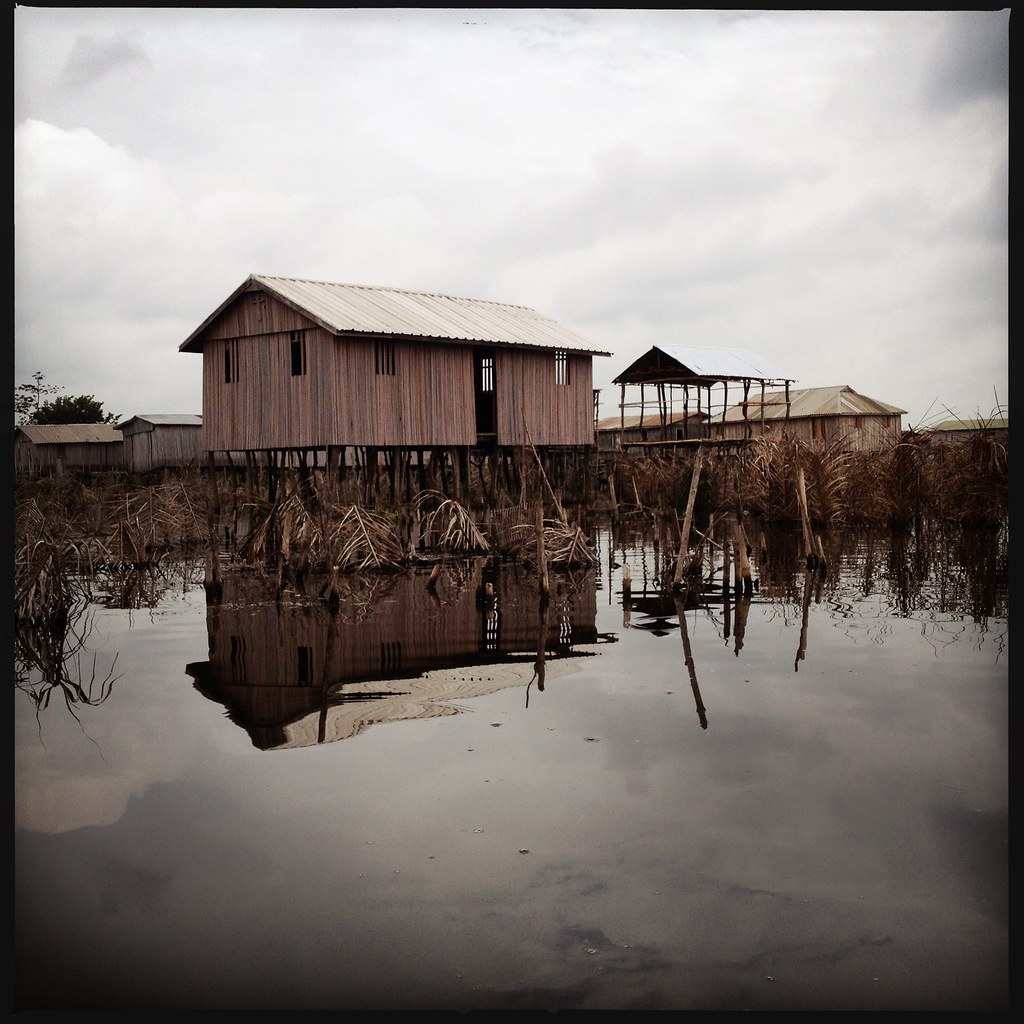
And indeed it was a city, with neighborhoods, and canals that, like in Venice, had street names. There was even a "street" called something like "lovers lane" in which in the evening young men and women take their canoes out to "cruise."
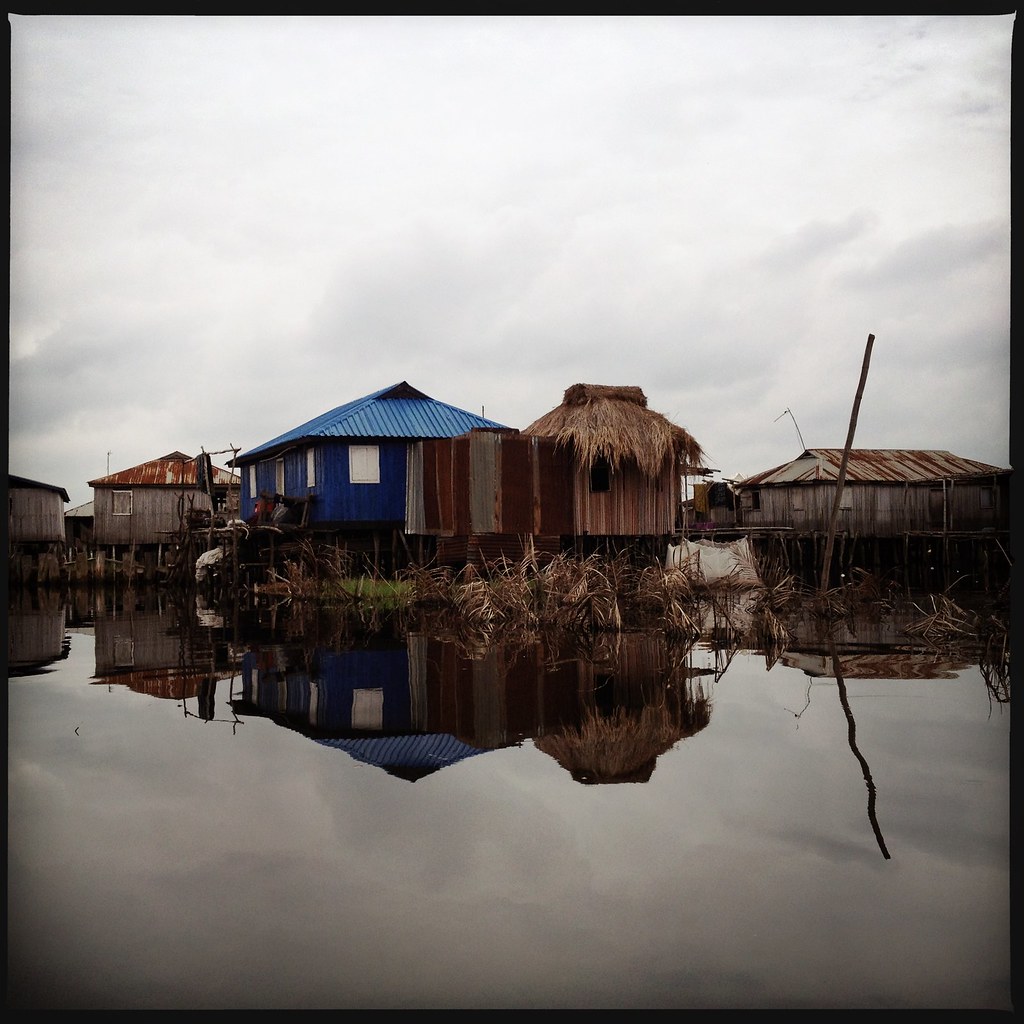
We were there early afternoon which appeared to be a pretty high traffic time of day for doing errands. It was all women and children doing the canoeing and had things like water vessels in their canoes and bowls of different things. They were all masters of maneuerving their boats around as well. A few times i was sure there would be collisions but there never was.

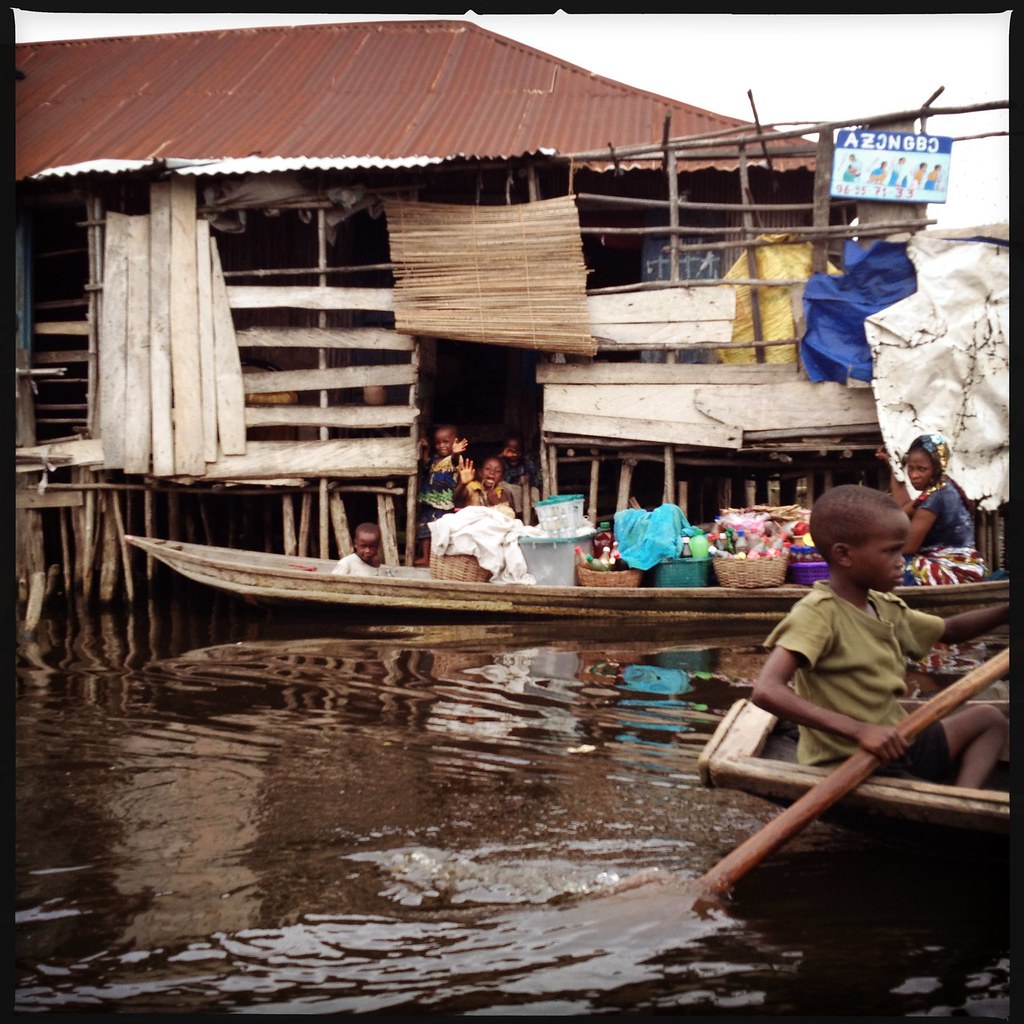

Ganvié has many of the same things any city would have, a medical clinic, a restaurant, a hotel, a convenience store and a church. This was the only structure i saw that didn't appear to be cobbled together by whatever materials could be found. The ground it was built on was created by the community going into the main land and bringing back soil.
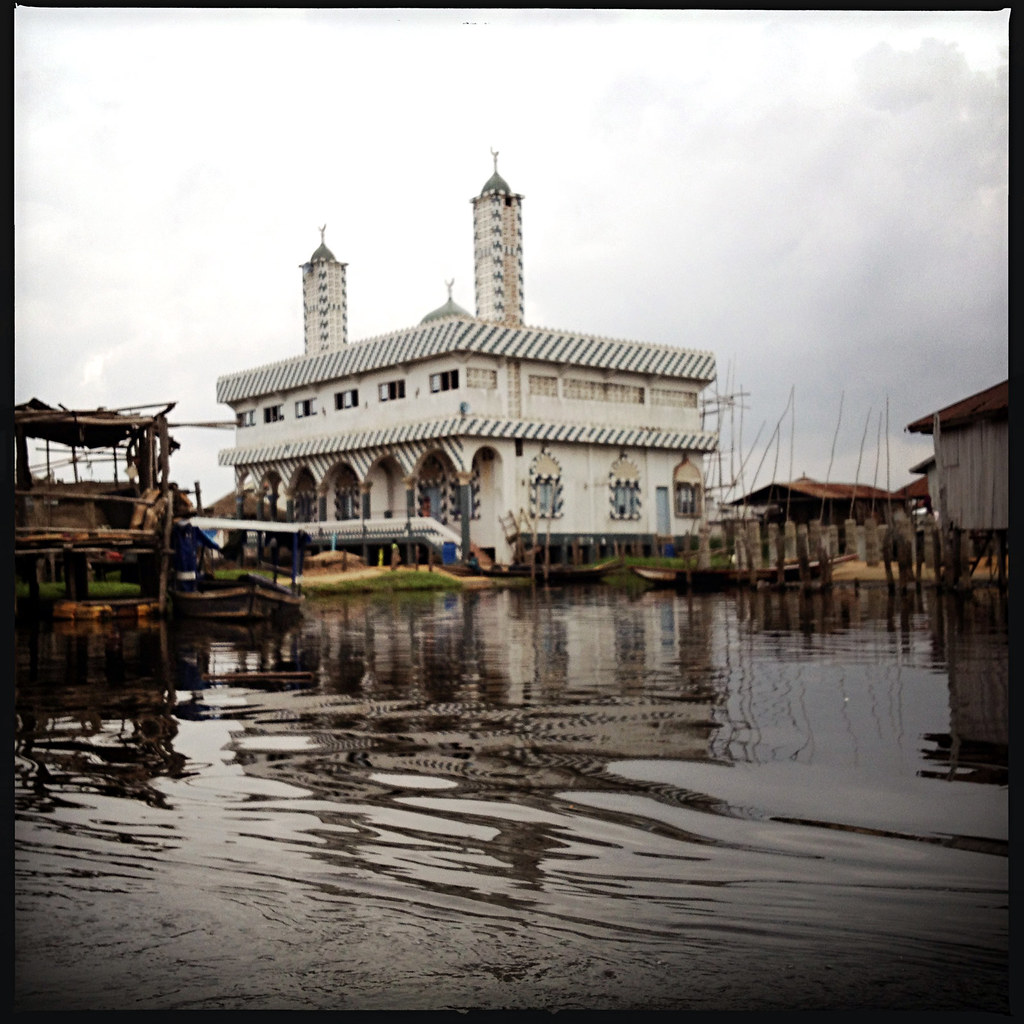
On the way back, as a fun photo, we took this of ourselves and boatsman, named "Junior" as i recall, whom in a very surreal way had our taxi driver who was also there take out his cell phone and play a song by Akon. I guess he's a popular artist both in America and Africa with the kids.
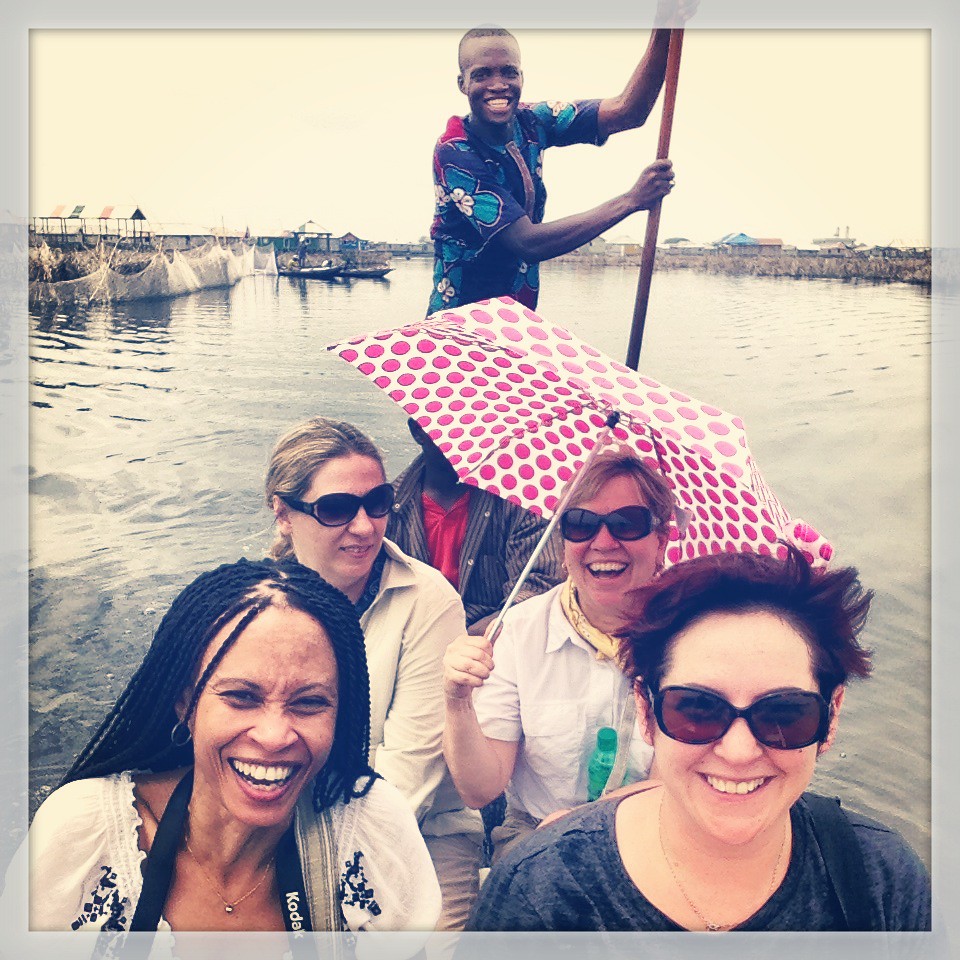
For other blog posts about this trip:
Initial Impressions of Togo

Post a Comment